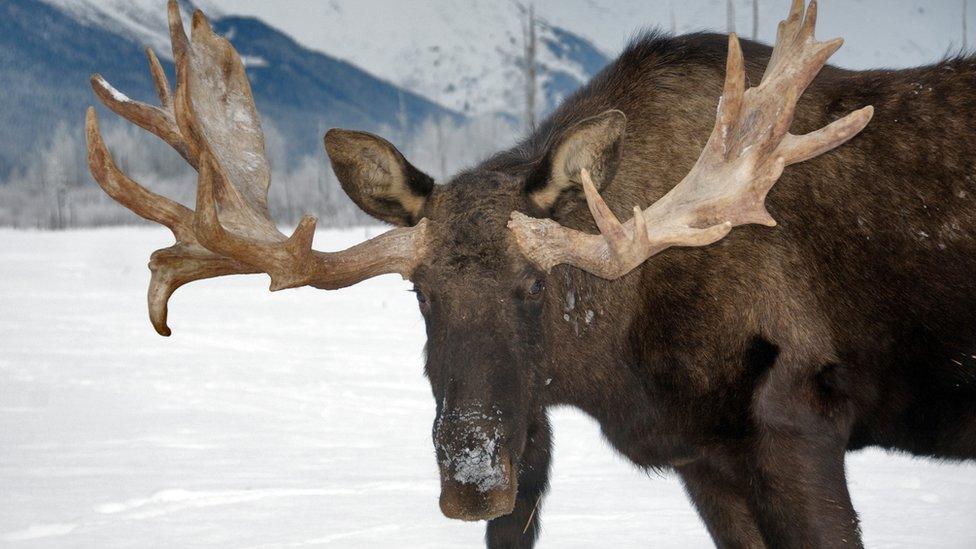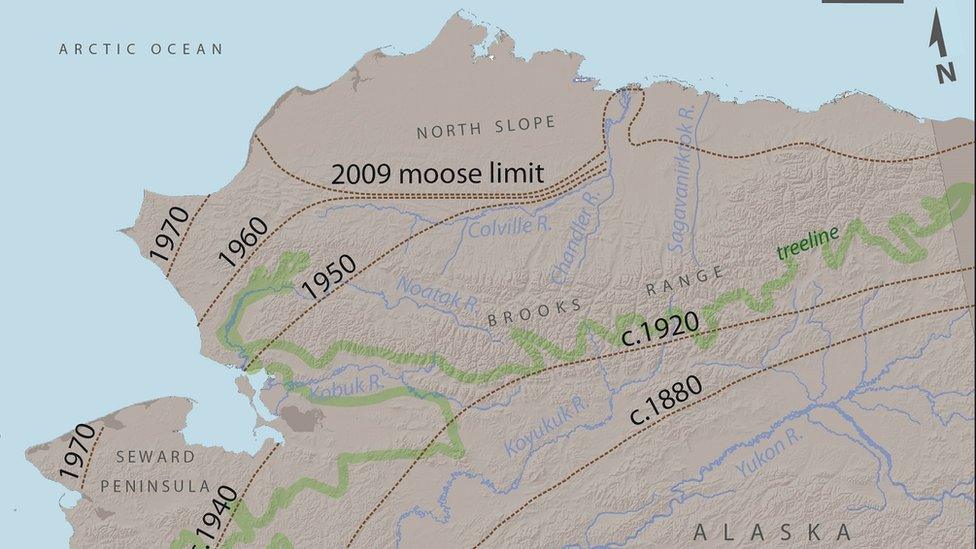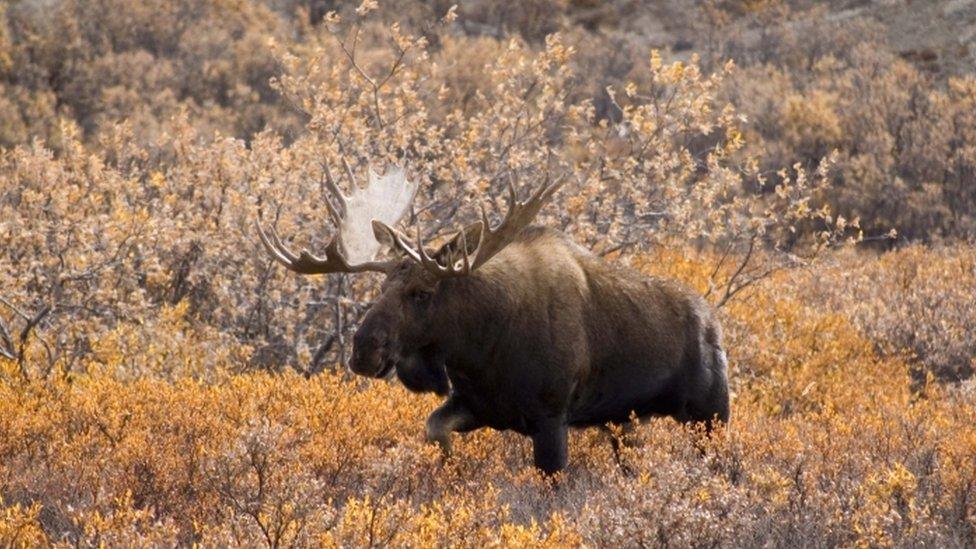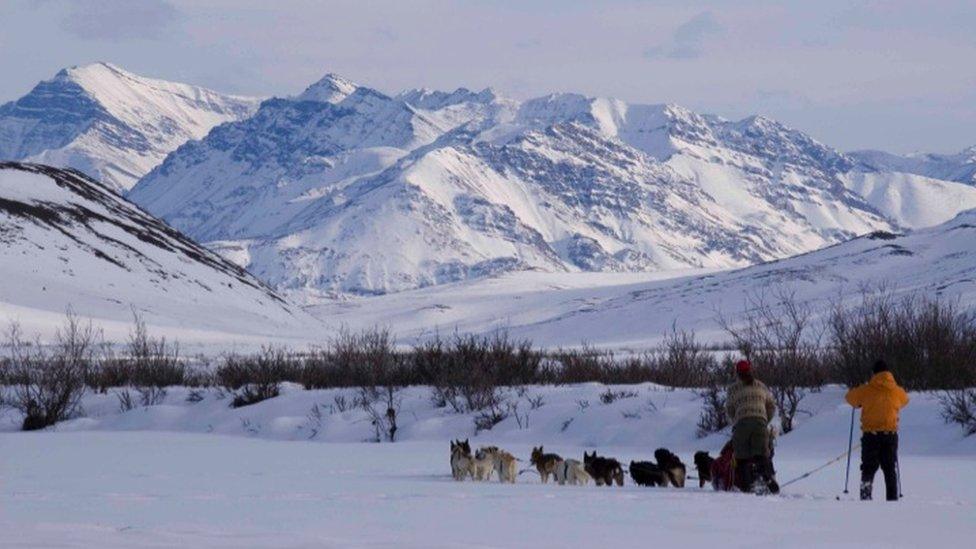More moose on the loose in a warmer Alaska
- Published

Moose in Alaska are moving closer to the northern coast as they follow the spread of shrubs
Rising temperatures and longer summers have helped the iconic Alaskan moose conquer vast new stretches of frozen tundra according to a new study.
Changes in climate have seen a rapid increase in the size of plants that the moose depend on in winter to survive.
The large, lumbering creatures have moved hundreds of kilometres northwards following the spreading shrubs.
Scientists believe the moose will continue to colonise new territories as warming continues.
The windswept, treeless tundra regions of Alaska saw a rapid decline in moose numbers around the start of the 20th century but there has been a rise in sightings in these northern and western areas since 2009.
This study argues that the changing fortunes of moose in the tundra were due to environmental reasons and not overhunting as some had previously suggested.
While caribou are able to dig down through the snow to find forage in winter, moose can only eat the shrubs and plants sticking through this layer.

Changes in the moose distribution have been mapped over the past 100 years
The researchers then investigated the relationship between shrub height and temperatures in Alaska dating back to 1860.
They found that global warming in the 20th century led to a longer growing season and they estimated that shrubs increased in size from around 1.1m in 1860 to around 2m in 2009.
They believe this is the key reason behind the rapid spread of moose into tundra over the past 10 years.
"It's an immense change," said Dr Ken Tape, lead author from the University of Alaska, Fairbanks.

Warming has helped shrubs grow taller so they are visible above the snow
"Moose are everywhere in Alaska now, they've changed their distribution by somewhere between 3-500km, if you look at the area I'd estimate its 210,000 sq km."
"You get the sense that the Arctic is this timeless place, you come back year after year and it's the same vegetation and in large parts that's true - but what this change in moose distribution is really telling us, is that it's not quite as timeless as we think."
The scientists believe that other species like the snow shoe hare have also benefitted from the spreading shrubs to move northwards as well.
They describe the process as the "boreal-isation" of the tundra with species like moose encroaching on endemic creatures. They believe they are seeing the emergence of a whole new wildlife community in the region.

Rising temperatures mean that shrubs and plants are growing taller in the longer growing season
The researchers argue that with temperatures continuing to increase, the northern march of the moose will be unimpeded.
"They will continue to move into the tundra and move towards the arctic coast," said Dr Tape.
"The sea ice lingers against the coast and so that has made the summer really short, so the height of shrubs goes down dramatically, but this is changing - they are getting taller near to the coast so you are getting more moose habitats nearer the sea."
The scientists believe these changes in moose range into tundra regions are happening not just in Alaska, but in Canada and in northern Russia as well.
The research has been published, external in the journal Plos One.
Follow Matt on Twitter, external and on Facebook, external.